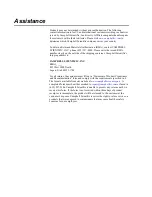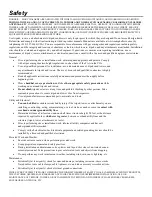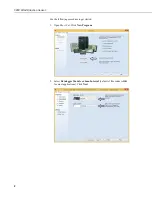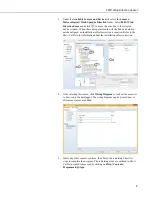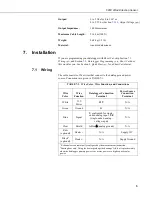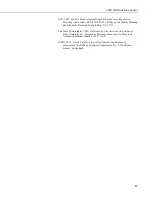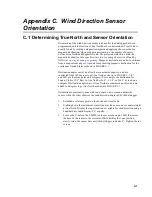
020C Wind Direction Sensor
6
7.2 Datalogger Programming
Short Cut
is the best source for up-to-date datalogger programming code.
Programming code is needed when:
•
Creating a program for a new datalogger installation
•
Adding sensors to an existing datalogger program
If your data acquisition requirements are simple, you can probably create and
maintain a datalogger program exclusively with
Short Cut
. If your data
acquisition needs are more complex, the files that
Short Cut
creates are a great
source for programming code to start a new program or add to an existing
custom program.
Short Cut
cannot edit programs after they are imported and edited
in
CRBasic Editor
.
A
Short Cut
tutorial is available in Section
. If you wish to
import
Short Cut
code into
CRBasic Editor
to create or add to a customized
program, follow the procedure in Appendix
(p. A-1)
. Programming basics for CRBasic dataloggers are in the
following section. Complete program examples for select CRBasic dataloggers
can be found in Appendix
(p. B-1)
.
7.2.1 VoltSE Instruction
The
VoltSE()
measurement instruction programs the datalogger to measure the
020C.
VoltSE
( Dest, Reps, Range, SEChan, MeasOff, SettlingTime,
Integ
/f
notch
, Mult, Offset )
Use 0.072 for the
Mult
and 0.0 for the
Offset
. For
Range
, use
mV5000
(CR1000, CR800, CR6, CR3000, CR5000) or
mV2500
(CR300). You need to
move a jumper to use the
mV2500
(p. 6)
).
If the sensor will be in electrically noisy environments, use 50 Hz or 60 Hz
rejection for
Integ/f
notch
.
If the wind vane will be oriented in a direction other than south,
an offset correction is required. Refer to Appendix
(p. B-1)
, for more information.
7.2.1.1 Output Voltage
The default output voltage range is 0 to 5 Vdc, which most Campbell Scientific
dataloggers can measure. For the CR300 datalogger to measure the 020C,
move the jumper block under the outer cover of the main body of the probe.
The outer cover is held in place by friction against two O-rings. To change the
range, carefully slide the outer cover down to expose the circuit board. A set of
three jumper pins is mounted at the top of the board. Set the jumper block over
pins
E1
and
2.5
. This changes the output voltage range to 0 to 2.5 Vdc, which
the CR300 can measure. After changing the jumper, slide the cover into place
over the top O-ring.
NOTE
NOTE
Содержание 020C
Страница 2: ......
Страница 6: ......
Страница 20: ...020C Wind Direction Sensor 12 ...
Страница 22: ......
Страница 24: ......
Страница 28: ...Appendix C Wind Direction Sensor Orientation C 4 ...
Страница 29: ......




